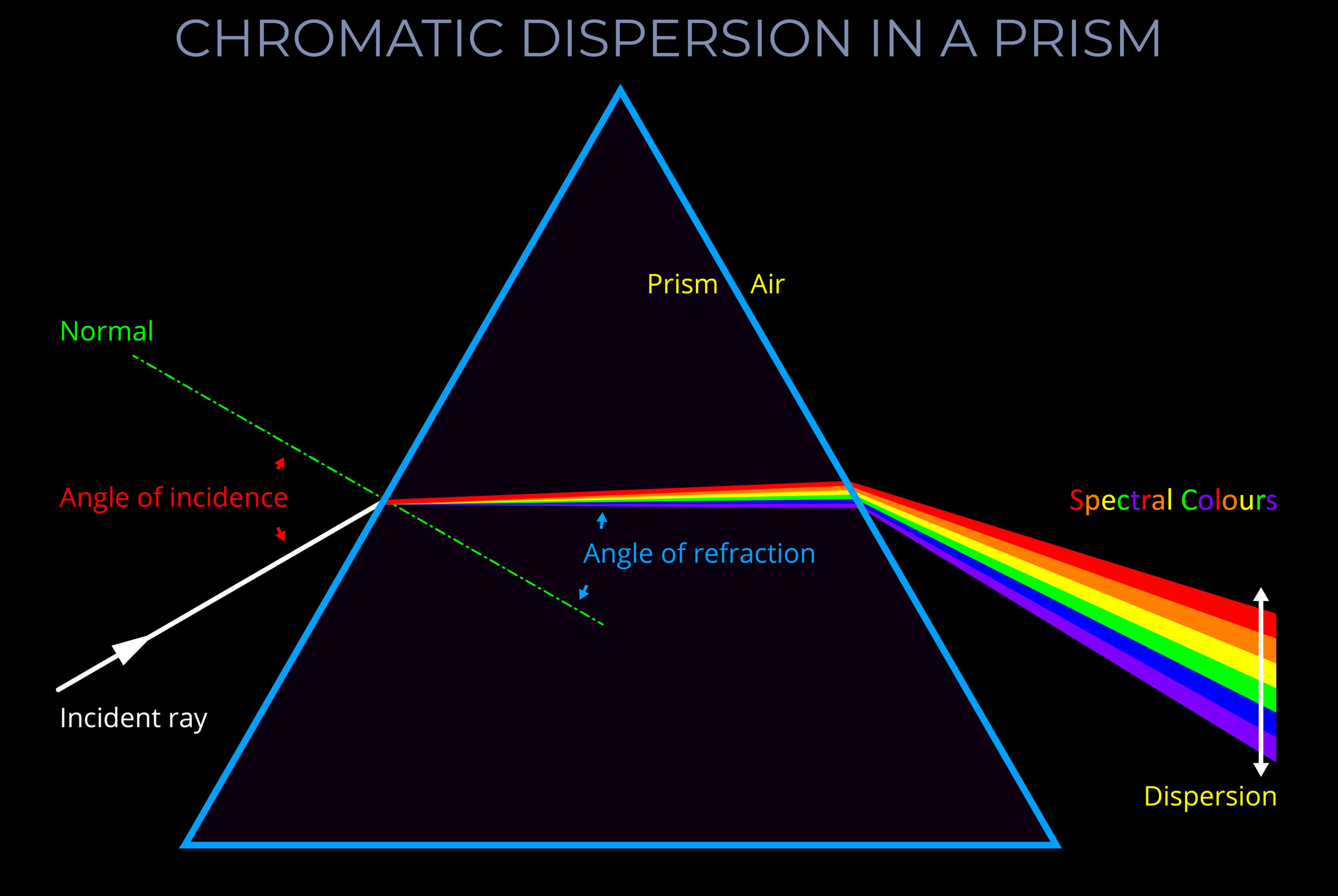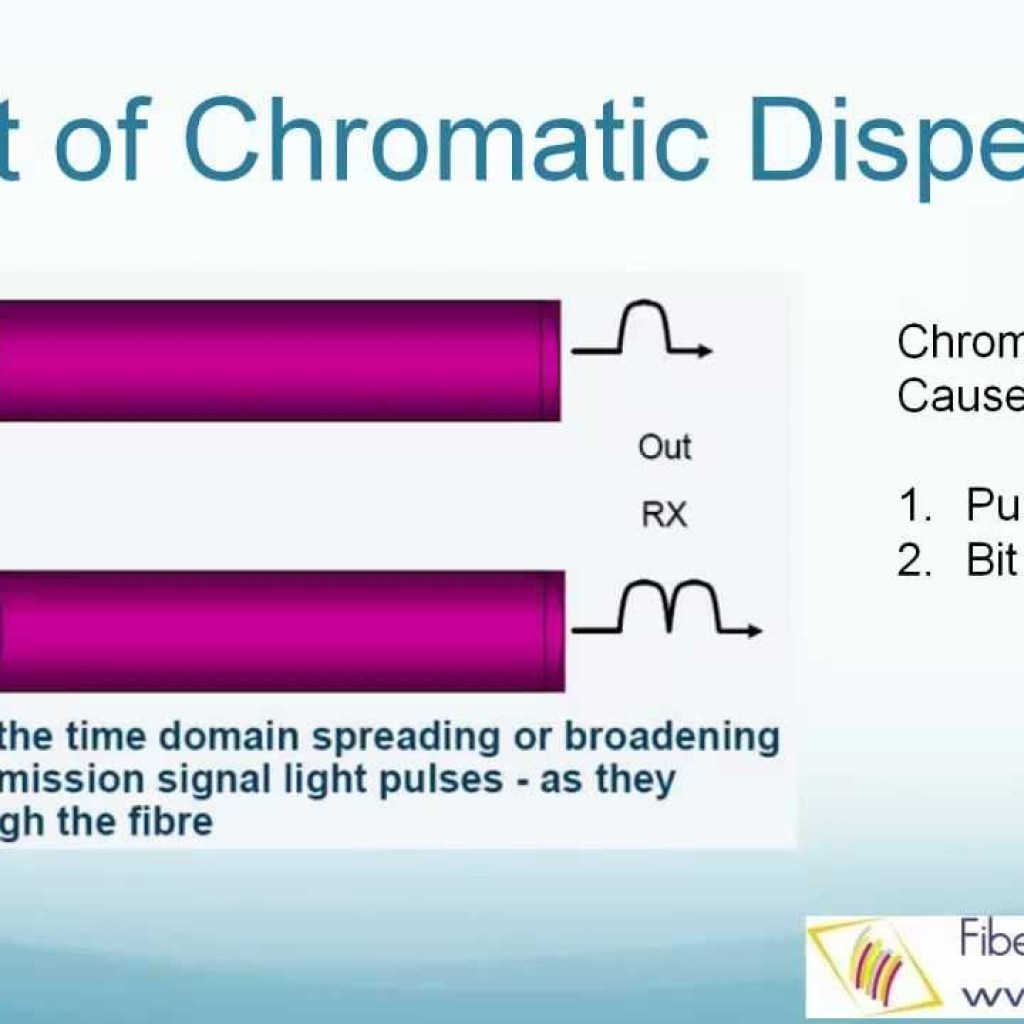Contents

Source: YouTube
Understanding Chromatic Dispersion in Optical Materials
Introduction to Chromatic Dispersion
Chromatic dispersion is a key phenomenon in optics, where the phase velocity and group velocity of light in a medium vary with the optical frequency. This variation is primarily due to the interaction of light with the medium’s electrons and is closely linked to absorption in certain spectral regions. Understanding chromatic dispersion is crucial for designing optical systems, particularly in telecommunications and laser technology.

Types of Dispersion
Chromatic Dispersion
The term “chromatic” distinguishes this type of dispersion from other forms such as intermodal and polarization mode dispersion, which are particularly relevant in optical fibers. Chromatic dispersion can also arise from geometrical effects, such as those found in optical components like lenses and prisms.
Intermodal and Polarization Mode Dispersion
While chromatic dispersion deals with frequency-dependent speed variations, intermodal dispersion refers to different modes of light traveling at different speeds in a multimode fiber. Polarization mode dispersion involves the differential speed of light in different polarization states, which can affect signal quality in fiber optics.
Measuring Chromatic Dispersion
Mathematical Description
Chromatic dispersion is often quantified using a Taylor expansion of the wavenumber as a function of angular frequency. This expansion helps in understanding how different orders of dispersion affect light propagation. The zero-order term describes a common phase shift, while the first-order term involves the inverse group velocity, indicating overall time delay without altering the pulse shape.
Second and Third-Order Dispersion
The second-order term, known as group delay dispersion (GDD), and the third-order term, known as third-order dispersion (TOD), are crucial for understanding pulse broadening and chirping effects in optical fibers. These parameters are essential for designing systems that require precise control over light propagation, such as in telecommunications.
Effects of Chromatic Dispersion
Dispersive Pulse Broadening
Chromatic dispersion causes different frequency components of a light pulse to travel at different speeds, leading to pulse broadening. In normal dispersion, higher-frequency components slow down, resulting in a positive chirp. Conversely, anomalous dispersion can lead to negative chirps.
Soliton Effects
When chromatic dispersion interacts with nonlinear effects like the Kerr nonlinearity, solitons can form. Solitons are stable, self-reinforcing wave packets that maintain their shape over long distances, making them valuable in optical communications and laser technology.
Applications and Implications
Telecommunications
In telecommunications, managing chromatic dispersion is vital for maintaining signal integrity over long distances. Techniques such as dispersion compensation using fiber Bragg gratings or dispersion-shifted fibers are commonly employed to mitigate dispersion effects.
Laser Technology
In laser systems, controlling chromatic dispersion is essential for achieving ultrashort pulse durations and high peak powers. Devices like prism pairs and chirped mirrors are used to manage dispersion in mode-locked lasers.
Conclusion
Chromatic dispersion plays a critical role in the design and operation of optical systems. By understanding and managing this phenomenon, engineers and scientists can optimize the performance of systems in telecommunications, laser technology, and beyond.

Source: lightcolourvision.org | lightcolourvision.org
Feel free to comment your thoughts.



